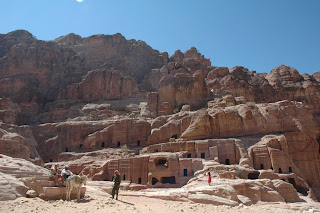 September 10, 2006.
September 10, 2006. The past few days have been quite tumultuous and the effects of war will definitely be felt here for some time to come. Weddings have re-started in Beirut despite the devastation, and when fireworks are set off in celebration, the city still trembles from the trauma of the low-flying Israeli aircrafts and bombs used to terrorize civilians in the dead of night. Some of the devastation is from wars gone, while the rest is an outcome of the recent war. It’s hard to tell the difference sometimes. Downtown Beirut, which has been renovated and modernized since the last civil war is slowly reviving life, but the clock tower in Nejmeh Square now serves as a memorial for those women and children who lost their lives during the bombing campaign in the South, particularly Qana. Medics are now claiming that chemical weapons must certainly have been used based on the unusual burn cases that have resulted in many of the deaths.
Mike, Adam, and I have been regularly attending the UNICEF water and sanitation cluster group meetings and finally met with the coordinator earlier this week. He was quite impressed with our concept, as IRD is the only NGO proposing to engage in pipe repairs in the targeted villages. He did, however, request that IRD provide him with more details regarding specific locations where we intend to implement the repairs, the extent of the repairs, approximate length of the pipe work, and quantity and size of tanks and generators with respect to each village. Mike and I are planning a field visit to roughly 5 of the targeted villages tomorrow to collect the additional data necessary.
We’ve met with several potential donors to discuss our capacity with them and propose relief works that will address the needs identified from the various needs assessment being conducted by IRD and other NGOs here. One of the more interesting meetings was with UNHCR, whose role has been limited to overseeing protection, temporary shelter, and camp management. There is no substantial IDP relocation/camp effort as most people with substantially damaged homes moved in with relatives and some even returned to their homes shortly after the war if there was a structure remaining. They will also distribute remedial repair kits for homes that essentially are temporary patchwork to close open portals, to be followed by more substantial repair kits for structurally damaged homes. In the second/early recovery phase, they are seeking to partner with organizations that can assist them in field assessment of damages, formulating technical solutions, training locals in the area in the necessary trades and overseeing/supervising reconstruction.
The damage in and around the city is incredibly extensive. It’s been quite a tiring, but extremely interesting learning experience for me, and I’m still quite excited to be a part of these efforts.


























